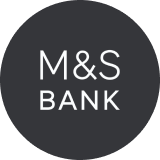Are you planning to take out a loan but confused about how much you’ll be asked to pay each month.
Or you could be curious as to how much interest you’ll need to pay over the life of the loan. Whatever your query or question, a loan calculator is your best friend.
In just a few clicks, you can calculate the total of your monthly payments, the total interest to be paid over the life of the loan, and even determine how much you can actually afford to borrow.
In this article, we’ll walk you through the basics of taking out a loan, all the jargon you need to know, and explain how a loan calculator can help you to make informed decisions about your finances.
What types of loan could I take out?
There are a whole host of loan types available on the market, and each can be used for different things.
It’s helpful to understand which type of loan is suitable for your specific needs before you think about applying.
This means you can use a loan calculator to get a clearer picture of your outgoings, allowing you to feel confident about your decision.
- Personal loans are a hugely popular credit product used by many people, for many different purposes. These loans are usually unsecured, and you can take one out for pretty much any reason you could think of. Home renovation, dentistry expenses, and debt consolidation are just some of the costs which people use personal loans to cover every day. Personal loans tend to have a fixed interest rate and repayment plan, so you can outline all the requirements with the lender before you take one out.
- If you’re planning to purchase a vehicle but aren’t able to pay in cash, a car loan could help you to fund it. Unlike personal loans, car loans are secured against the vehicle you purchase. This means that if you don’t repay the loan you’ve taken out, the lender can repossess your car by way of recuperating their cash. However, this does mean that the interest rate you pay is likely to be lower, as the lender is taking less risk on a secured loan.
- If you’re a small business owner or an entrepreneur, you are able to take out a business loan to either finance your continued operations or expand your business. Instead of dipping into your personal savings to keep things going, this is a much more risk averse way of helping your company flourish if you can ensure you keep up with repayments.
These are just a few types of loan you could apply for, and there are many other out there for you to peruse.
The best way to approach researching a loan is to ensure that you compare the terms and conditions of different lenders, as well as the overall cost of each product, before you apply.
This is where a loan calculator can help accelerate your decision-making process and give you peace of mind.
What’s the difference between a secured and unsecured loan?
Whilst taking you through different loans you can take out, we mentioned that some are unsecured, whereas some are secured. When you are researching loans, you’ll come across these terms a lot. But what do they really mean?
The main difference between these types of loans is the presence or absence of collateral in the arrangement you make with a lender.
How you use a loan calculator will be impacted by whether the loan you’re looking for is secured or not, as the cost of borrowing varies between these loan types.
A secured loan is always secured against an asset you own, such as a car or a house. If you fail to make your repayments on one of these loans, the lender is allowed to repossess the asset you’ve put up to recover their cash.
Secured loans are less of a risk to lenders as they’ll always have a method to collect their money.
This means that they usually come with lower interest rates and higher borrowing limits. If you have an asset you’d be willing to put up, and are confident you’ll be able to make prompt payments to the lender, a secured loan can ultimately save you money in the long run.
An unsecured loan, on the other hand, is not secured against any assets. You won’t be at risk of losing a valuable possession if you fail to repay, as the lender will have to go through other methods of collection if you default.
However, unsecured loans are a riskier prospect for lenders as they can’t guarantee you own anything which will cover the sum of the cash you’ve borrowed if they need to collect their money through an alternative route.
For this reason, they usually come with higher interest rates and lower borrowing limits.
Personal loans and credit cards are just some examples of unsecured loans, while car loans and mortgages are examples of loans which are usually secured.
However, depending on your situation, personal loans can be secured with an asset too if you don’t have the credit score to warrant a lender offering you an unsecured personal loan.
When you’re choosing between a secured and unsecured loan, it’s smart to consider the amount you need to borrow, as well as the interest rate, and the repayment terms.
There are risks and benefits of each type of loan, which are all impacted by your specific financial situation.
There is no one size fits all approach to loans, so using a loan calculator and talking with a lender can help you make a choice between taking one out under the secured, or unsecured route.
What is APR?
When you’re on the hunt for a loan deal, one of the most important factors to consider is the Annual Percentage Rate (APR).
You may have seen this term throughout the course of your research, but what does it really mean?
APR essentially captures an overall picture of the total cost of borrowing money from a lender.
This figure will include the interest rate, as well as any other fees associated with the loan, like processing costs or administration fees.
The APR is expressed as a percentage, and it helps you to compare different loan offers from various lenders, ensuring you get the best deal.
For example, if you borrow £1,000 from a lender with an APR of 10%, you’ll pay £100 in interest on this loan over the course of a year.
However, if another lender is offering to lend the same amount with an APR of 20%, you’ll end up paying £200 in interest.
It’s important to note that the APR is a different figure from the interest rate. The interest rate only represents the cost of borrowing the sum you request, while the APR of course takes into account any additional charges you’ll be expected to cover.
When you’re comparing loan offers, make sure to look at the APR. This will give you a better idea of the total cost of borrowing and help you decide whether the loan amount you have in mind is affordable.
How long should my loan term be?
The length of the loan term which you can negotiate with a lender depends on a few factors including the amount you’re looking to borrow, the interest rate on the loan, and how affordable monthly payments will be for you.
Generally, longer loan terms equate to smaller monthly payments which can be more manageable for a lot of people, but they also mean that you’ll pay more in interest over the life of the loan.
Shorter loan terms, on the other hand, mean much larger monthly payments. However, they also mean that you’ll pay less in interest over the life of the loan, driving the cost of borrowing down substantially.
In an ideal world, you should agree to a loan term which allows you to comfortably make monthly payments without compromising other financial goals you might have. It’s also wise to factor in any potential emergencies which might mean you have to cover other costs on top of the loan repayments.
When defining a loan term, it’s wise to consider the following points:
- If you’re getting a loan with a high interest rate, it’s generally better to choose a shorter loan term if you can afford it. This will minimise the amount of interest you’ll pay.
- Choose a loan term which allows you to make monthly payments that fit your budget. A lender will not want to cause you any financial strain.
- Compare the total cost of the loan using the APR figure. This will help you to determine which one offers you the best value.
Ultimately, the length of your loan term will depend on your individual financial situation and goals, as well as any other criteria the lender has. Make sure to carefully consider all factors before deciding on a loan term.



